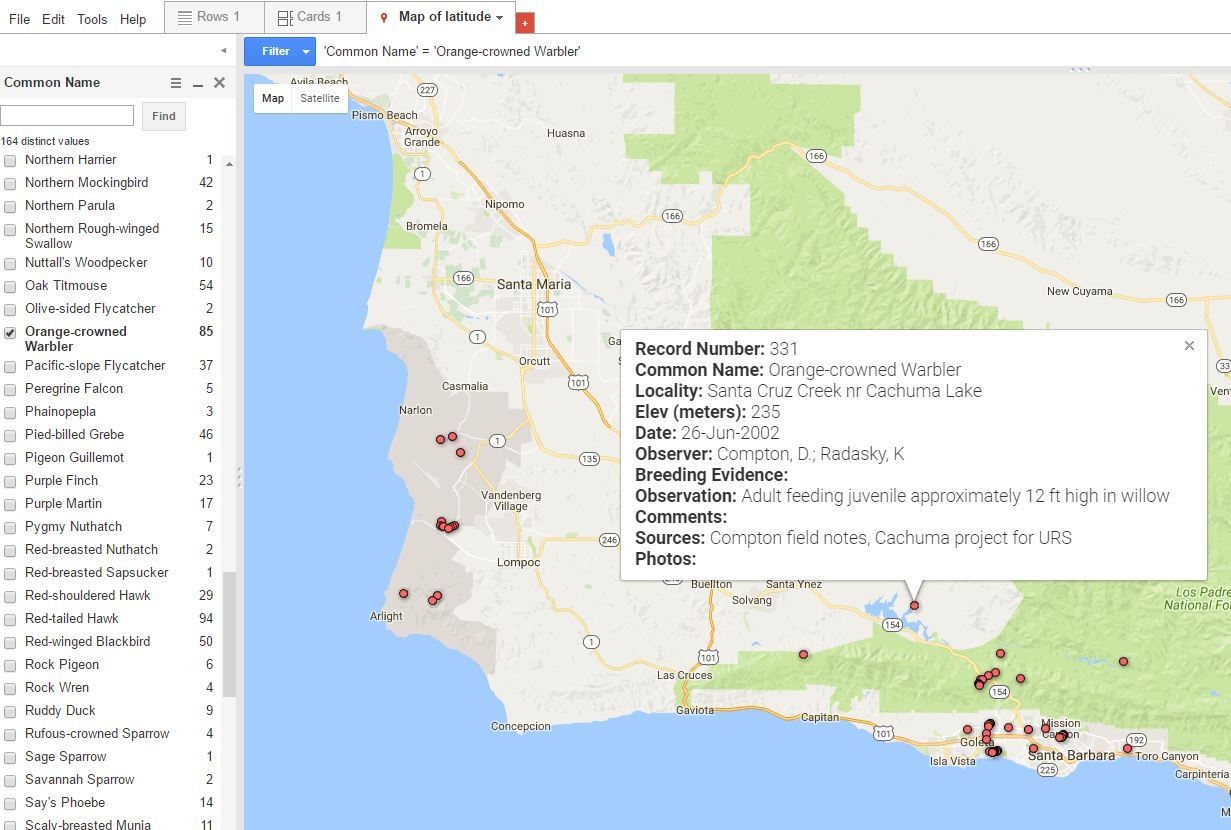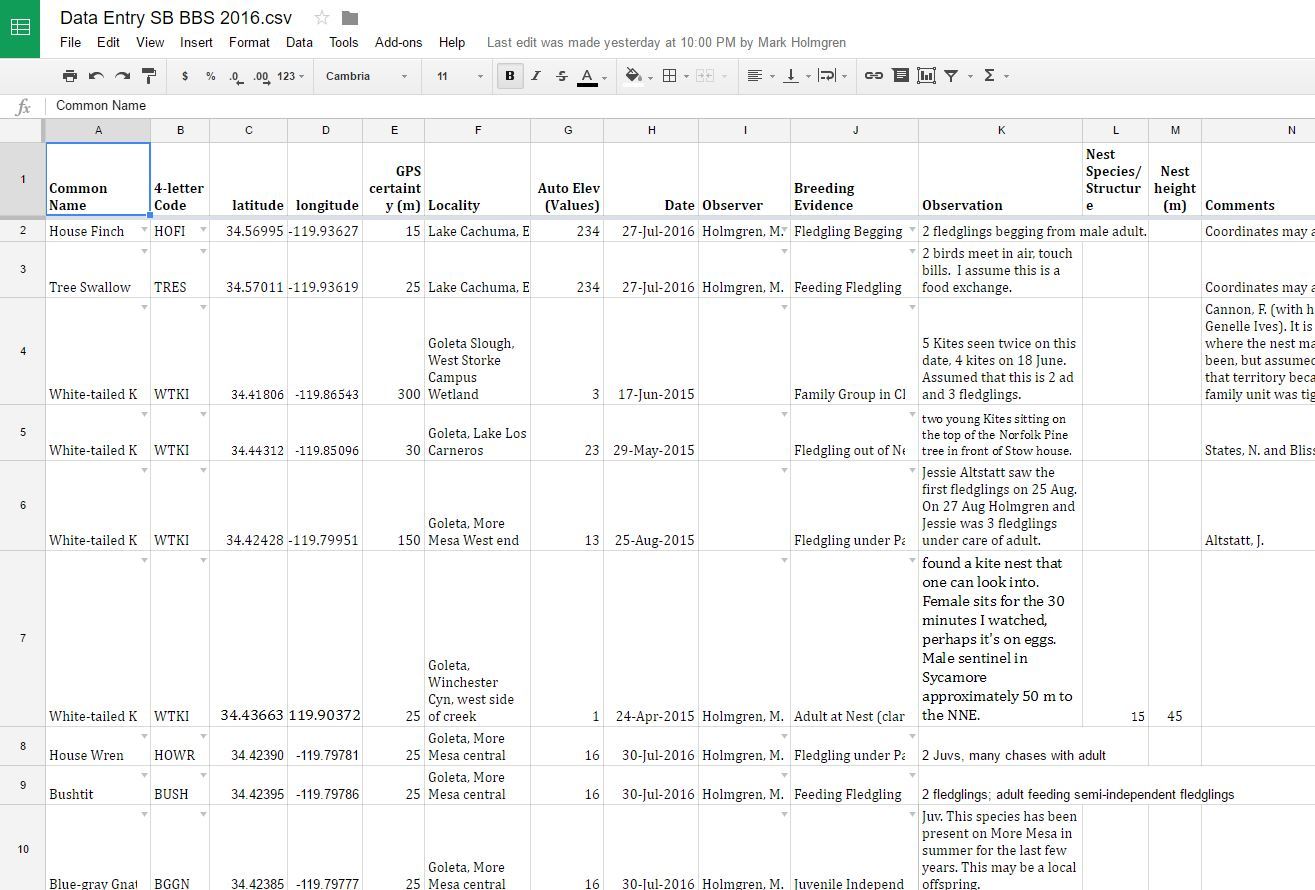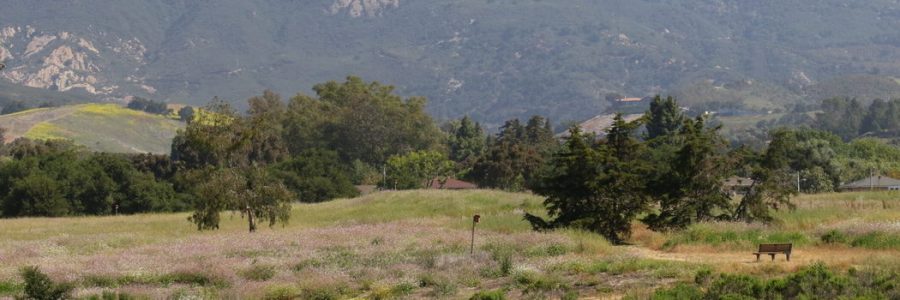by Adrian O’Loghlen
[Editor’s note: This is the full article referred to on page 3 of El Tecolote September-November 2016.]
One of the most informative approaches for assessing how the rapid and extensive development of urban and rural lands affects local bird populations is to monitor the breeding activity of species that have historically bred in an area. Furthermore, collecting this type of information is important more generally because it is widely accepted that birds can be indicators and provide insights into the ‘health’ of habitats and ecosystems used by all local wildlife.
We are very fortunate in SB County that the process of gathering this key information is in progress and a sizable database of local bird breeding records already exists. We have Mark Holmgren to thank for this. Back in the 1980’s, when he was working as the Curator of the Vertebrate Museum at UCSB, he recognized the value of this information and decided to create a SB Breeding Bird database using historical records at the Museum and other archived sources. In addition, he recruited a number of local birders to submit evidence of breeding (courtship behaviors, active nests, fledgling birds, etc.) they observed when they were out birding. In this context, Dave Compton deserves special mention as the most prolific contributor to the database with more than a thousand breeding records submitted to date.
More recently, Mark was motivated to find a way to make the data in the SB BBS available to the public online and to provide a way for birders to submit new breeding records electronically. In 2014, I joined Mark as a collaborator to help him achieve these latter objectives. Initially, we investigated the possibility of integrating the SB database with eBird, for example, by having an integrated data entry system so that breeding records submitted to eBird would automatically appear in the SB BBS. However, this proved not to be feasible at this time and so we looked for an alternative way of hosting the database online. The answer we eventually settled on was to use Google Fusion Tables (GFT), an online data visualization application with an impressive capability to generate maps from raw data. Currently, there are almost 3500 records in the SB BBS GFT which can viewed at https://goo.gl/AJQxKj using either a computer, tablet, or smart phone. To view a map showing all the breeding records for the County, simply click (left mouse button or equivalent) on the ‘Map of Latitude’ tab (see Figure 1).
Each of the red dots shown on the map represents a breeding record and clicking on a specific dot will display selected details of that record. Furthermore, you can use the ‘Filter’ button to generate subsets of the records. For example, by clicking on the Filter button, selecting the Common Name filter, then checking the box for a species of interest, you will see a map of all the locations of breeding records for that species (see Orange-crowned Warbler [ed. banding code OCWA] example in Fig.1). For some of the records, the details include a link to a photo showing evidence to support the record. There is also a ‘Map Only’ view (https://goo.gl/lHneSD) of the GFT, which is designed to be downloaded for use on a smart phone or tablet. This latter version does not allow manipulation of the records, but will show breeding records in the vicinity of your current location. For security reasons, access to the GFT provided by these links is for viewing only – you need to contact Mark or me if you want to save filtered results or download the entire database.
There is a separate website for submitting new breeding records to the GFT (Figure 2). This is so Mark can review new entries to ensure accuracy and reliability of the data. After review, new records are transferred to the GFT. Submitting data to this spreadsheet is facilitated by ‘drop-down’ selection menus for some categories which, besides making it easier to enter data, ensure that entries are consistent, e.g., that the exact same Common Name is used by every Observer. If you would like to participate in contributing new or past breeding records to the database, please contact Mark or me.
As regards how this information could be used, there are many possibilities. For example, the data can show the intensity of breeding activity by month throughout the year, either for all locally breeding birds or specific species. Again, the data could highlight the impact a proposed land development project is likely to have on a species of special conservation concern, e.g., White-tailed Kites.
The SB BBS GFT is still in its early stages of development as is the case with GFT-type applications in general. In fact, GFTs are still considered “experimental” and new features are regularly being added to the application by Google and other developers. We will continue to enhance users’ experience with the SB BSS by adding some of these features as appropriate. While these new features may be “cool” and exciting, they are not crucial to the utility and future development of the SB BBS. What is and will continue to be crucial for the success of this endeavor is the contribution local birders can make by submitting their own field observations of local breeding activities in the County to the SB BBS database.
Contact:
Mark Holmgren – email hidden; JavaScript is required
Adrian O’Loghlen – email hidden; JavaScript is required



